Special Education & EL In-Person Services Rally
Parents and educators join to demand “in-person services in safe spaces” for highest-needs students
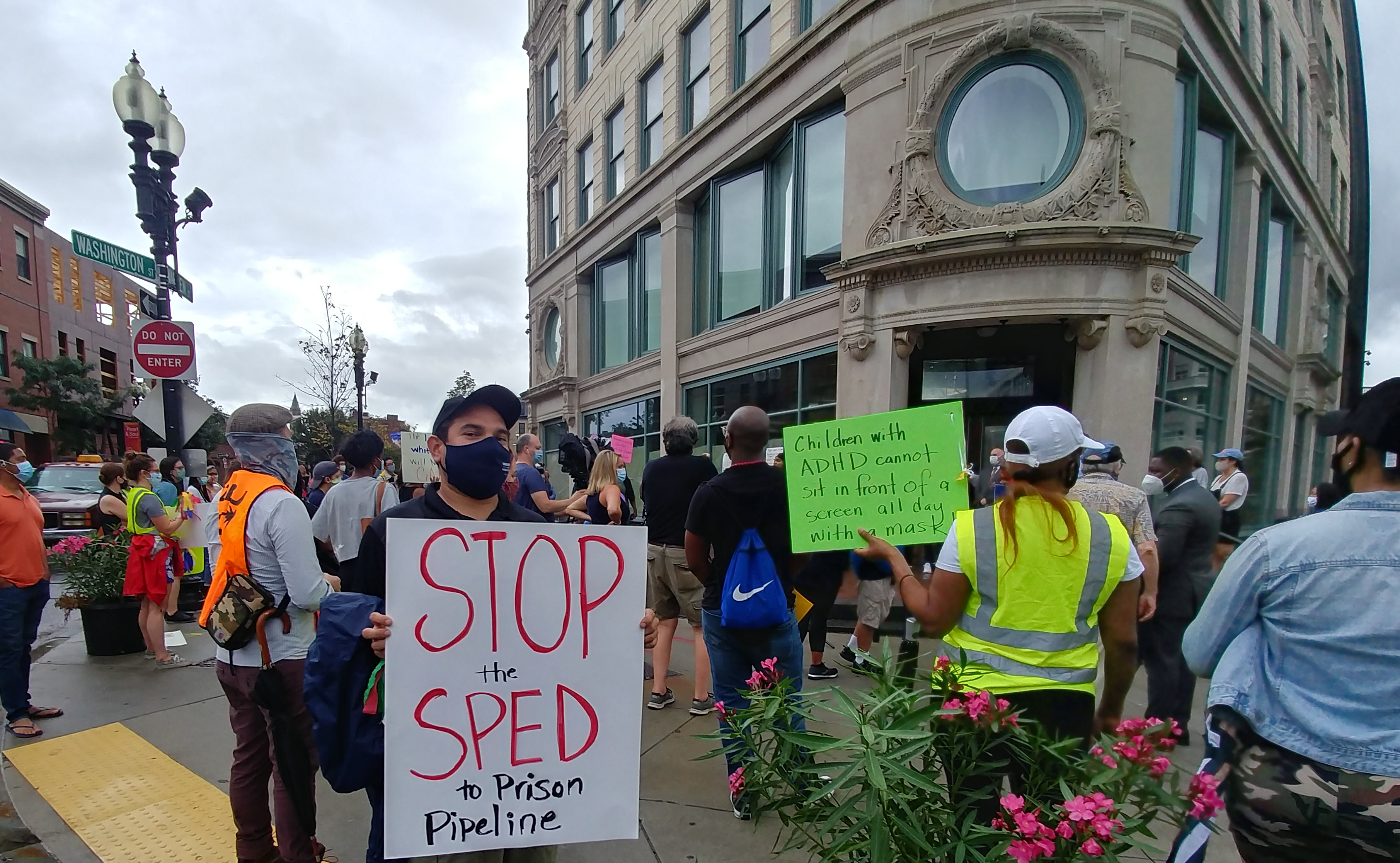
By Alain Jehlen
About 100 parents and educators came together outside the Bolling Building headquarters of the Boston Public Schools yesterday to demand that officials find safe spaces for students who desperately need in-person services.
These are children who have severe disabilities, or are just starting to learn English, are homeless, or face other major barriers that block them from learning online.

“Why not put our students in the Bolling Building, and send the administrators into the schools?” asked Edith Bazile, a former BPS special educator and former President of the Black Educators Alliance of Massachusetts who was one of the organizers.
Bazile suggested City Hall could also be used for in-person learning. She said there are many spaces, public and private, that are available and easier to make COVID safe than some of the aging school buildings.
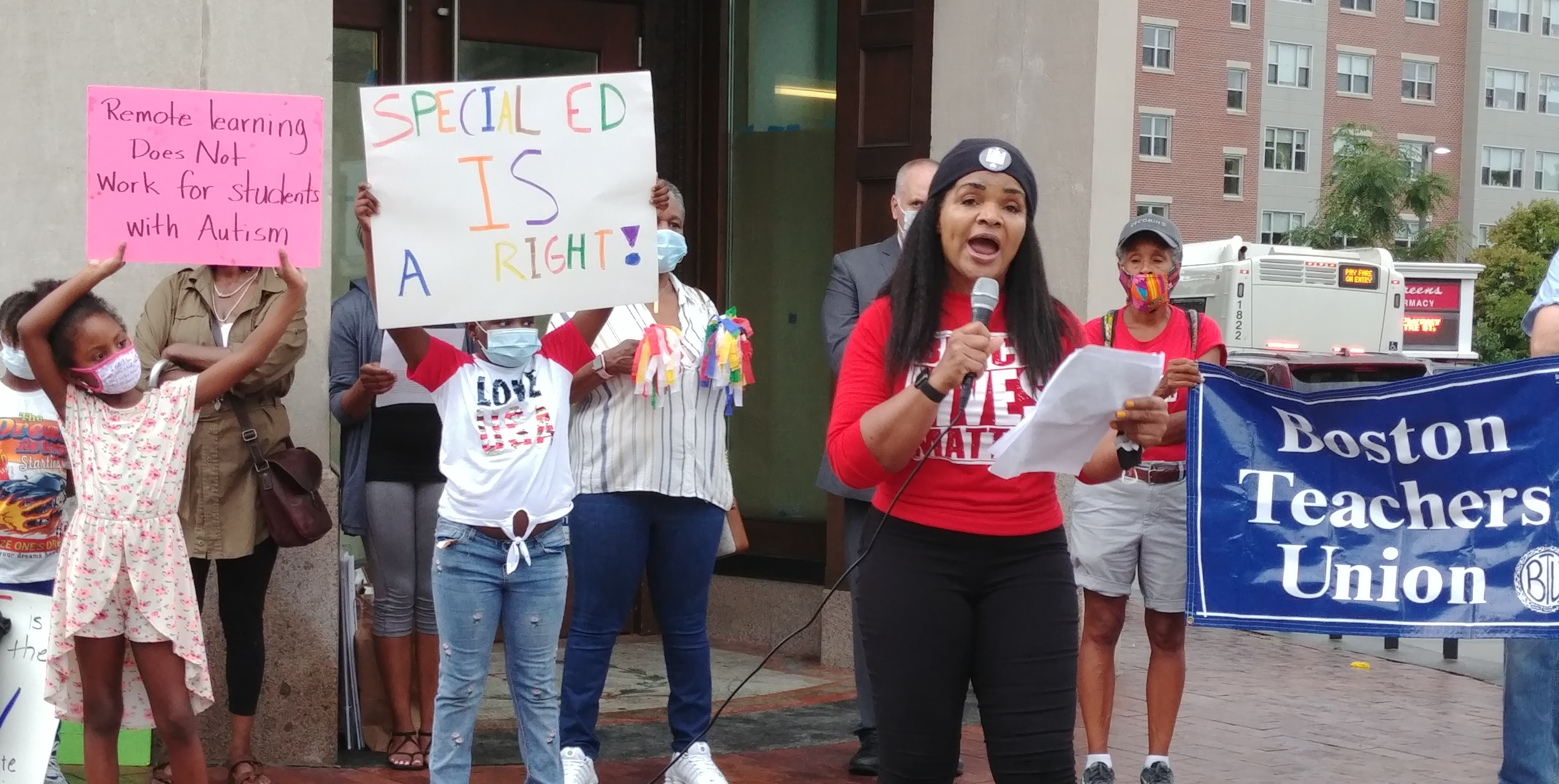
The rally was organized by the Boston Education Justice Alliance, the BPS Special Education Parents Advisory Council, the Boston Teachers Union, and 10 other organizations.
In-person help delayed
But while the groups were gearing up for the protest, the BPS administration delayed the four-day-a-week, in-person learning they have promised for the highest-needs students.
Last week, the reopening schedule called for four-day-a-week in-person services to start October 1. But this week, with no notice to families, the schedule on the BPS website was changed to just two days a week starting October 1.
Four-day-a-week help for these students is now put off until a “Date to be determined… based on classroom capacity and transportation timeline.” The only exceptions are a relatively small number of students who go to special schools. They are to start four days a week October 12.
Do the right thing?
The change was so sudden, it tripped up an effort by Mayor Marty Walsh and Superintendent Brenda Cassellius to promote the reopening plan in a column in the Bay State Banner, posted yesterday. “We are prioritizing high-needs special education students by giving them the option of in-person learning up to four days per week, starting October 1,” Walsh and Cassellius wrote. “This is the right thing to do.” It may be right, but it’s not what they’re doing according the current plan.
Parents explain why their children need in-person learning
At the rally, several parents described their children’s unsuccessful experience with remote learning.

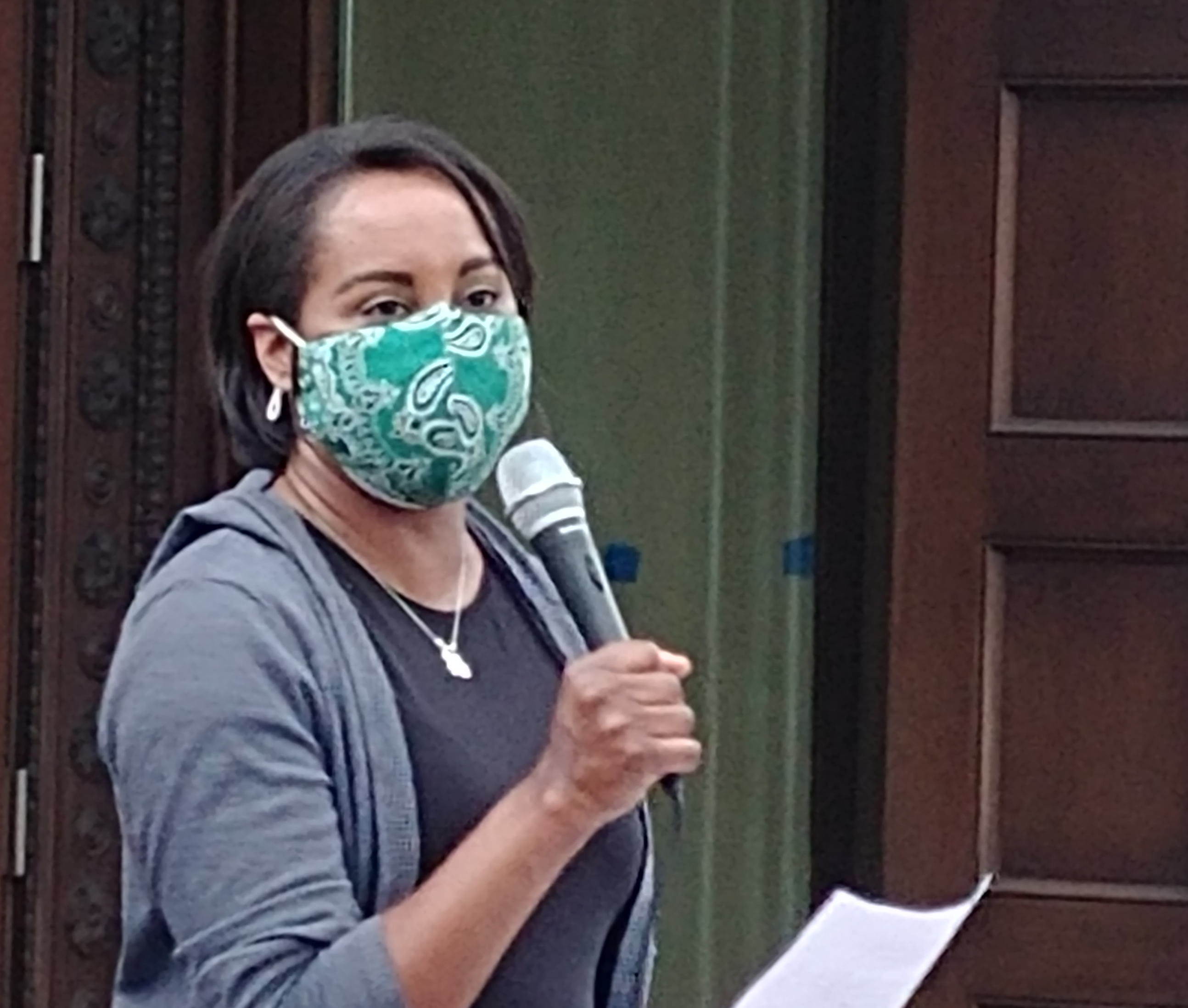
“My son has significant intellectual and physical delay due to Down Syndrome,” said Blackstone School parent Karina Paulino-Pena, speaking in Spanish with an English translator.
“He was not able to stay seated in front of the computer for more than 15 minutes. He could not concentrate, much less respond to the teacher’s questions. Of three therapies he has to do for 30 minutes every week, he only managed to do one.
“I did not see any positive results for him in terms of his learning, to the point where I’m asking the principal if my son can repeat the year,” she said.


Trotter School parent Brittany Fox Blackwood said her four-year-old son has disabilities in expressing himself and interacting with peers. “He can’t overcome them if he’s just with his mom,” she said. “He knows I can predict his needs so he doesn’t try hard to explain himself. It’s like pulling teeth to get him to spell it out.
“Also, at home, there’s just me and my sister. But at school, there are many different people, so he learns, ‘I can do this with this person, but not with that person.’ Those are basic abilities he needs as he grows up and he can’t get them at home,” she said.


Josiah Quincy School parent Renee Banks said her son has a muscle disease for which he gets physical and occupational therapy at school.
“Virtual therapy is not doing anything for his body,” she said. “The teachers have done what they can, but the district is not making sure things are happening for him.
“I bought exercise equipment for him but I don’t have a degree in physical therapy. His ligaments are tightening up. And I can’t meet his educational needs. My son needs to go back to school.”

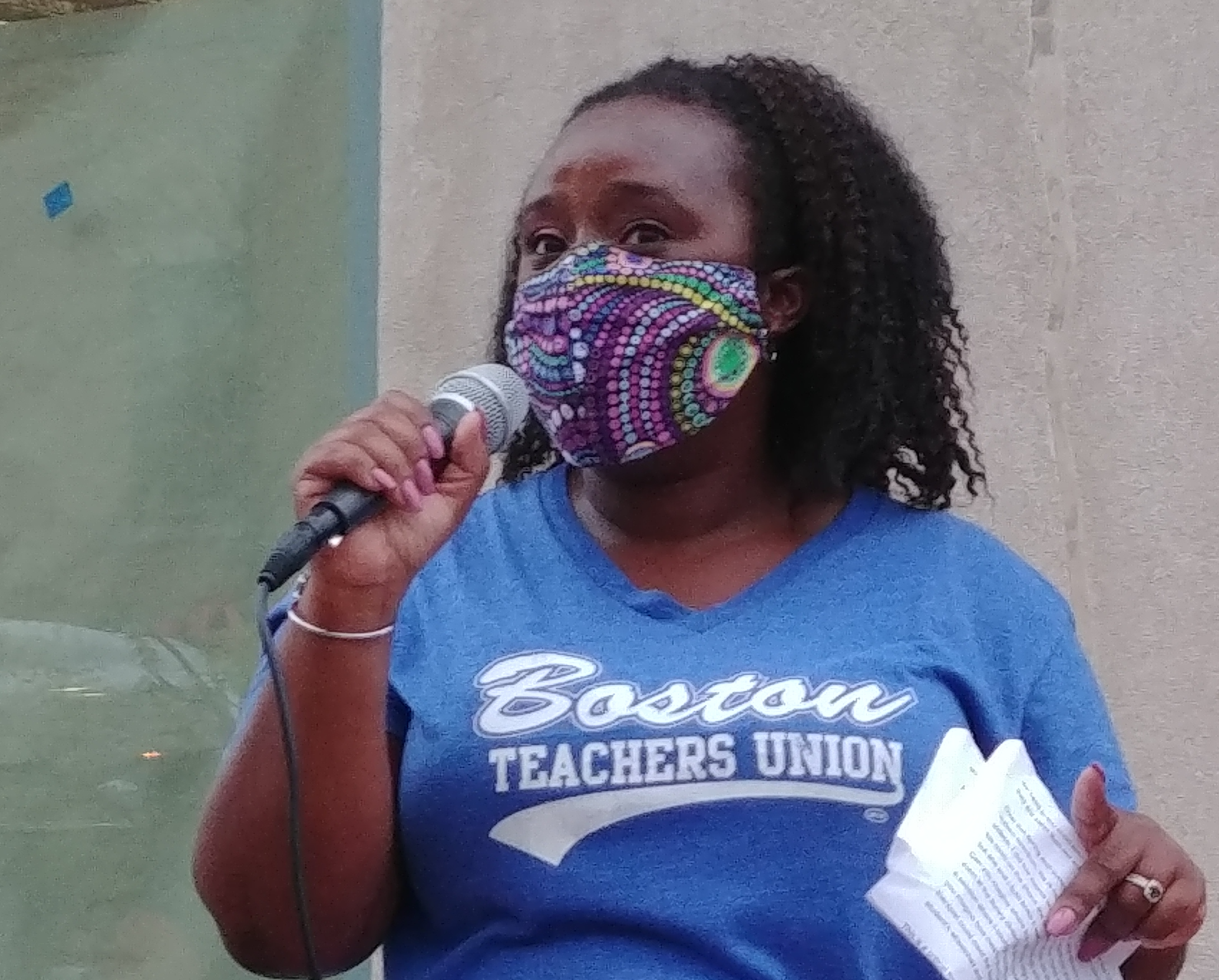
BPS Occupational Therapist Cassandra Crichlow told about a nonverbal four-year-old boy on the autism spectrum whom she works with. “His mom and I did everything we could think of. We did Zooms, we did videos, we did phone calls. But we both knew it was not enough.
“Imagine if I could have said to her, ‘Bring him to the Grove Hall Library and I can coach you on strategies, and you can try them out in front of me and I can be sure that when you go home, you feel empowered to support your son.’
“Maybe he would have kept his skills.”
According to BPS Assistant Superintendent for Special Education Ethan D’Ablemont-Burnes, BPS officials are determining how many high-needs students can get four days a week of in-person learning based on what other parents decide for their children. He described the process as he faced angry parents at a Zoom meeting of the Special Education Parents Advisory Council (SpEdPAC) August 20.
He said the first step was to find out how many parents want their children in the “hybrid,” two-day-a-week program rather than fully remote learning. Those students are assigned seats first. The highest-needs students will get four days a week in the seats that are left over in each school.
D’Ablemont-Burnes said he had not heard any discussion of moving highest-needs students to other buildings if there’s no space at their current schools.

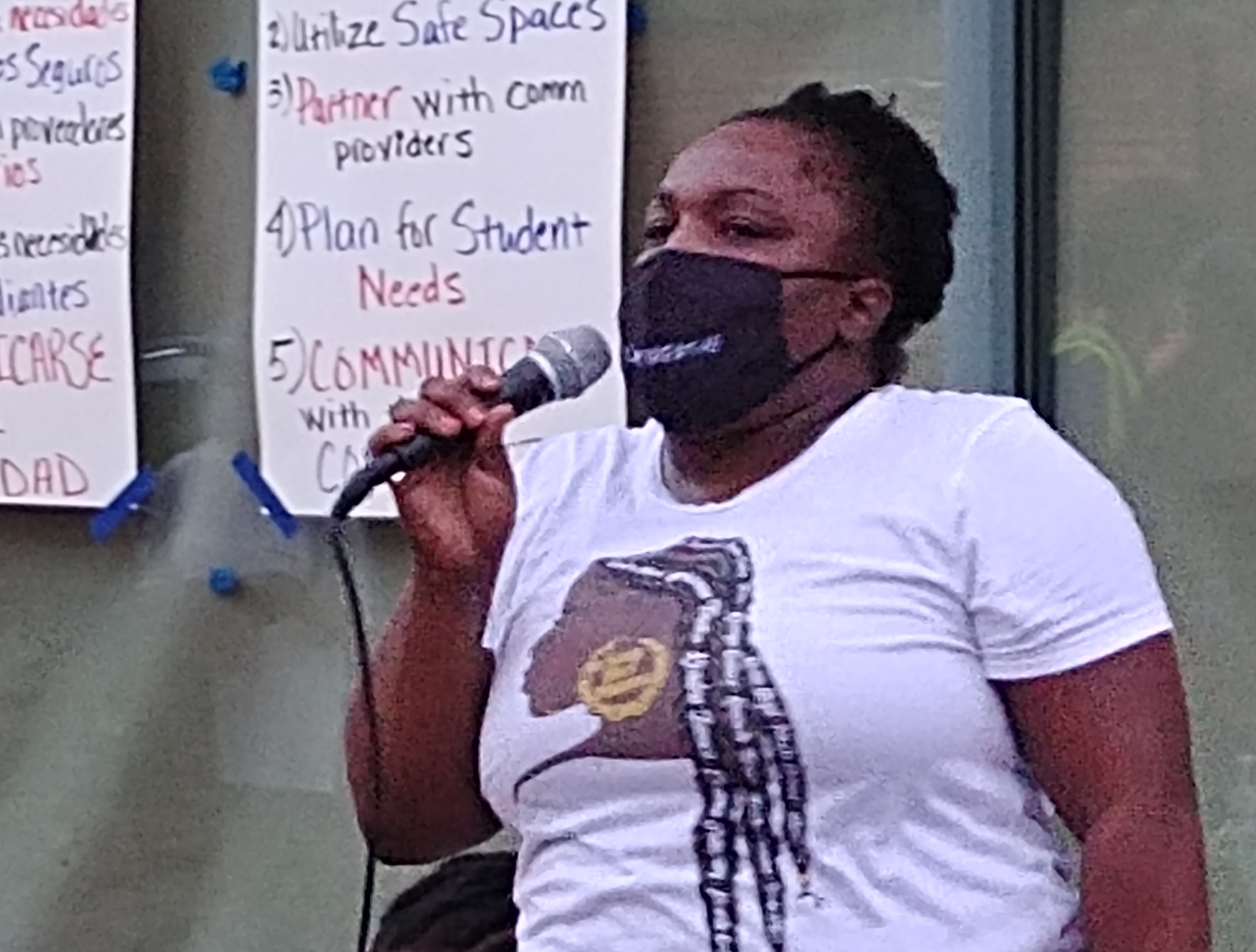
The SpEdPAC was one of the main sponsors of the rally.
“We want to know why high-needs students weren’t prioritized and offered the option for four days of in-person services first in the 35 safe schools that have ventilation systems,” said SpEdPAC chair Roxann Harvey.
“These children will never get this year back.”


BTU President Jessica Tang said the union recognized that remote learning did not work well for many students in the spring, and came up with a plan to do it better in summer school, which they called the “Whatever It Takes” plan. But she said the administration wouldn’t agree.
The union’s reopening proposal would give first priority for in-person learning to the highest-needs students, and send them to the safest buildings regardless of where they are currently assigned.
“What we don’t want to see happening,” Tang said, “is that only those students that are already in the schools that have safer facilities get the services. That’s not equitable.”
Many other school districts have announced plans that do give the highest-needs students clear priority for in-person learning. Those districts, according to their published plans, include Brookline, Cambridge, Lynn, New Bedford, Randolph, Somerville, and Worcester.
The groups sponsoring the rally, in alphabetical order are:Boston Coalition for Education EquityBoston Education Justice AllianceBoston Liberation Health GroupBoston Network for Black Student AchievementBoston Special Education Parents Advisory CouncilBoston Teachers UnionCitizens for Juvenile JusticeCitizens for Public SchoolsCity Life/Vida UrbanaMassachusetts Advocates for ChildrenOrder of St. Martin de PorresQuality Education for Every Student (QUEST)St. Stephens Youth Programs
